As October comes to a close, most of the tea farmers here in Sonogi seem to have finished their autumn harvest: 秋番茶 akibancha (also often called 秋冬番茶 shuutoubancha : autumn & winter harvest).
Whilst tamaryokucha is the main tea in this region, no farmer we’ve met so far is producing any tamaryokucha in Autumn season.
From the very end of September till mid-October the FORTHEES factory was producing their autumn tencha, whereas a different tea farmer, Tozaka, only started his autumn harvesting for his houjicha from mid-October onwards as he was waiting for the temperature to cool down for the optimal day vs night temperature difference.
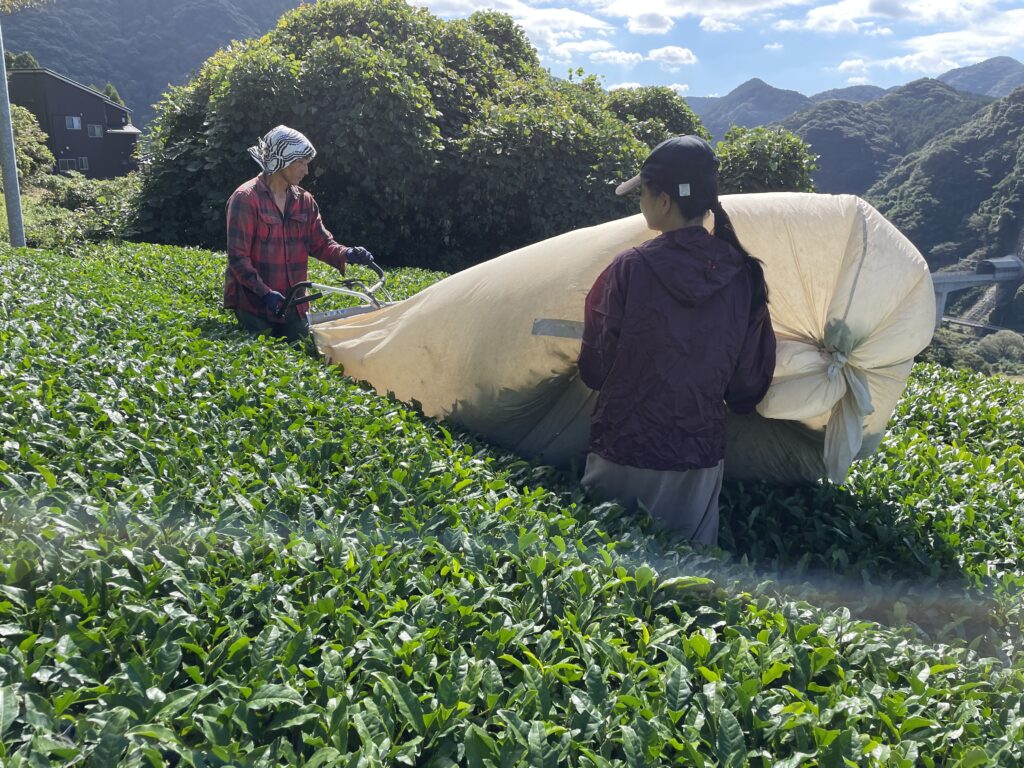
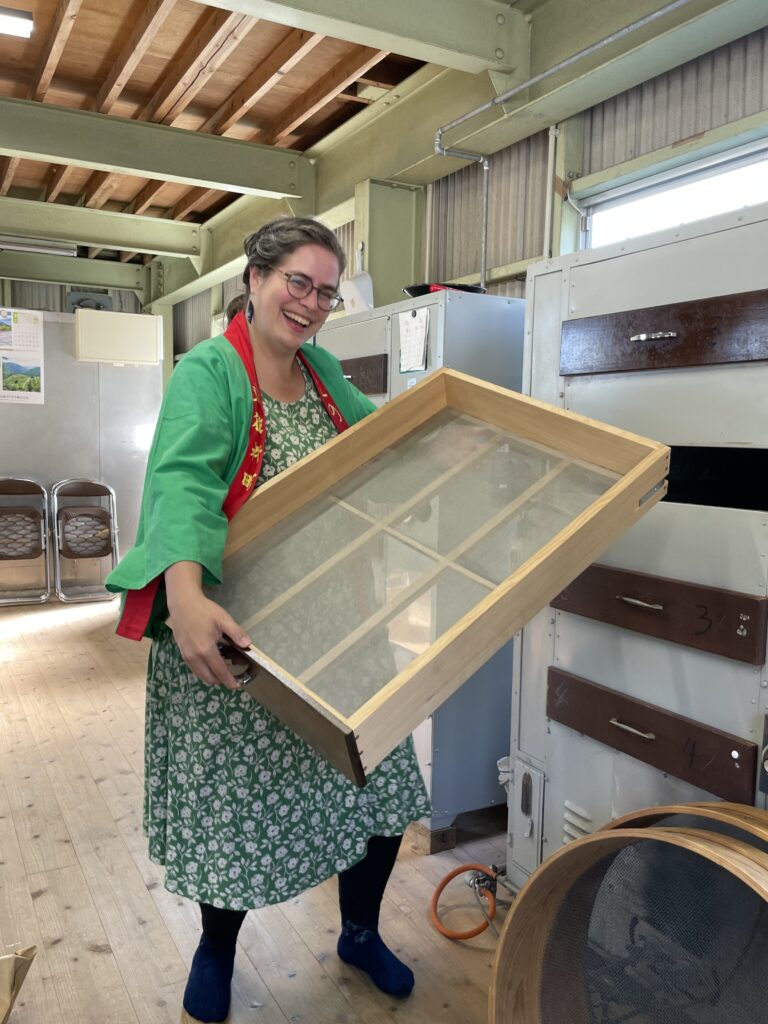
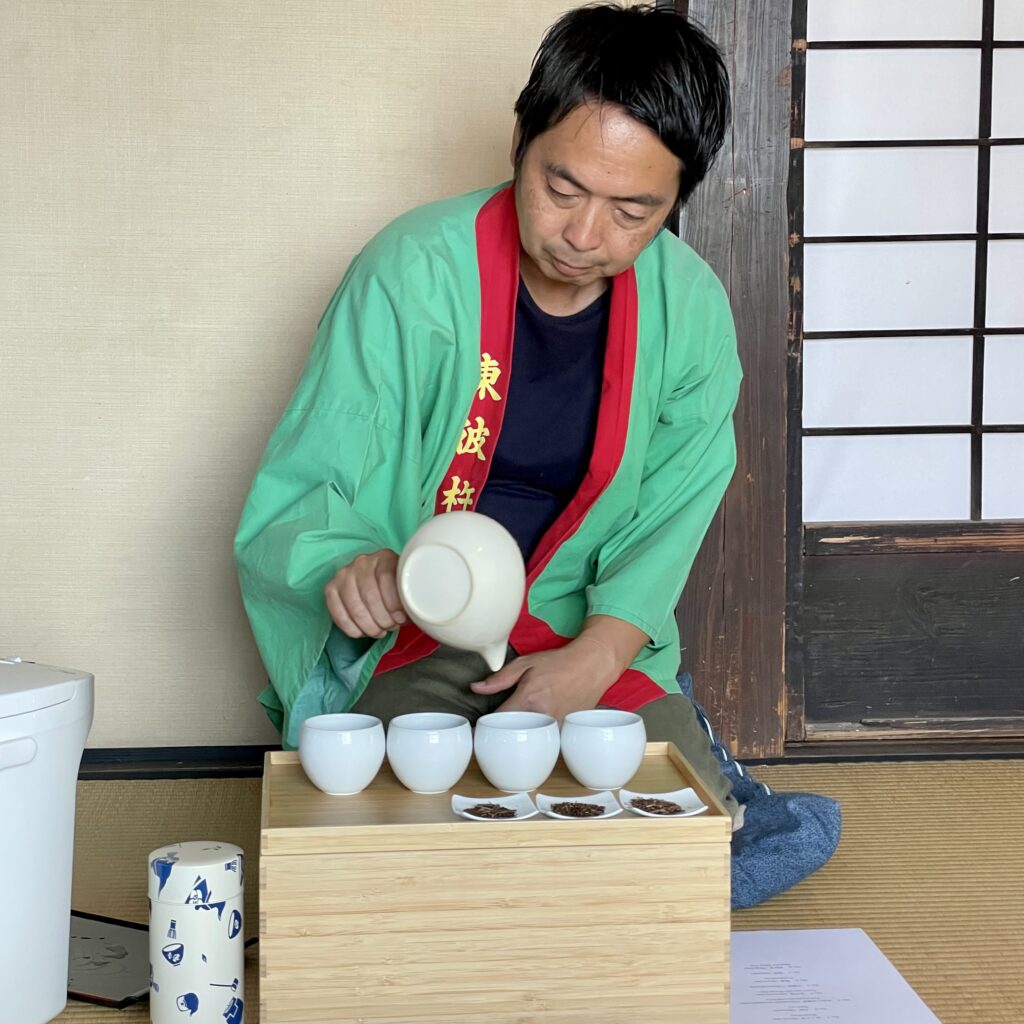
We broke our record of tea tour bookings this month, thank you to everyone who visited us!
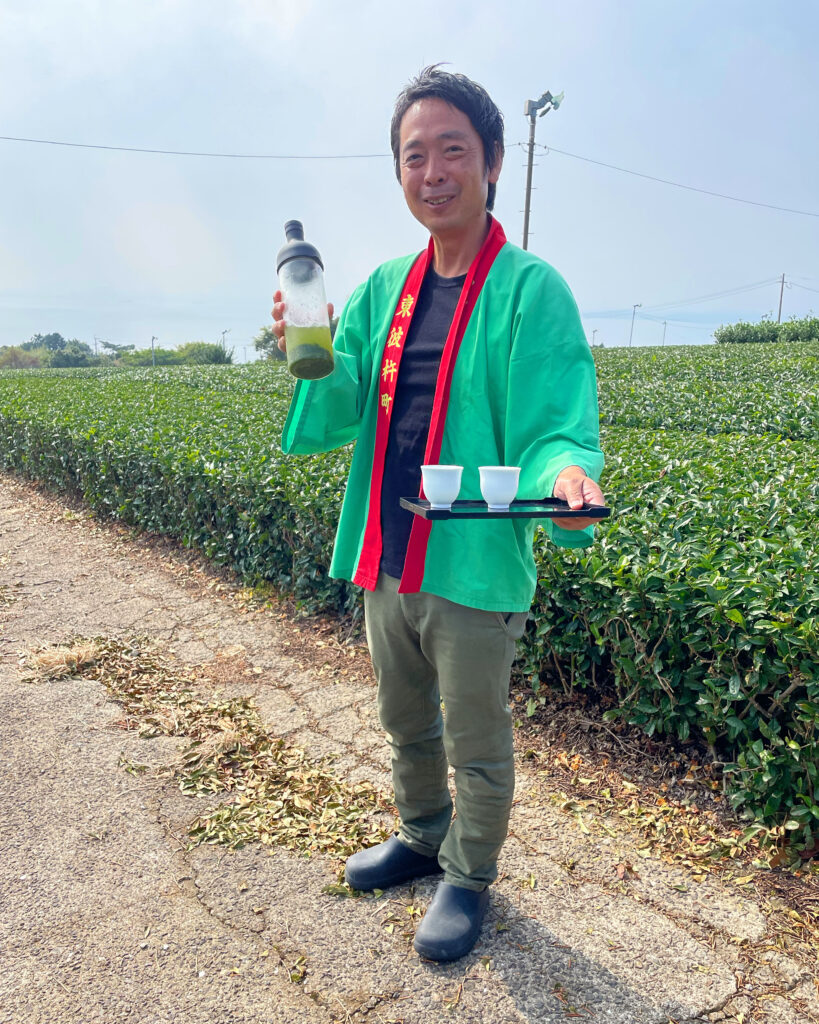
Fushun-an & Fushun-en
Earlier this month we finally made a visit to Hirado to visit Fushun-an & Fushun-en.
When monk Eisai returned from studying Buddhism in China, he first landed in Hirado in 1191. Near his landing spot in Hirado, he built a small hermitage (Fushun-an) where he practiced and spread his teachings.
On his journey from China back to Japan, Eisai brought with him tea seeds and the knowledge how to grow and process tea. Right next to his meditation centre he planted the first of his Chinese tea seeds, creating one of the very first tea gardens in Japan: Fushun-en.
While the original meditation centre is no longer there, the original tea plot is still filled with tea trees (though the trees are likely a long line of descendants removed from their original ancestors).
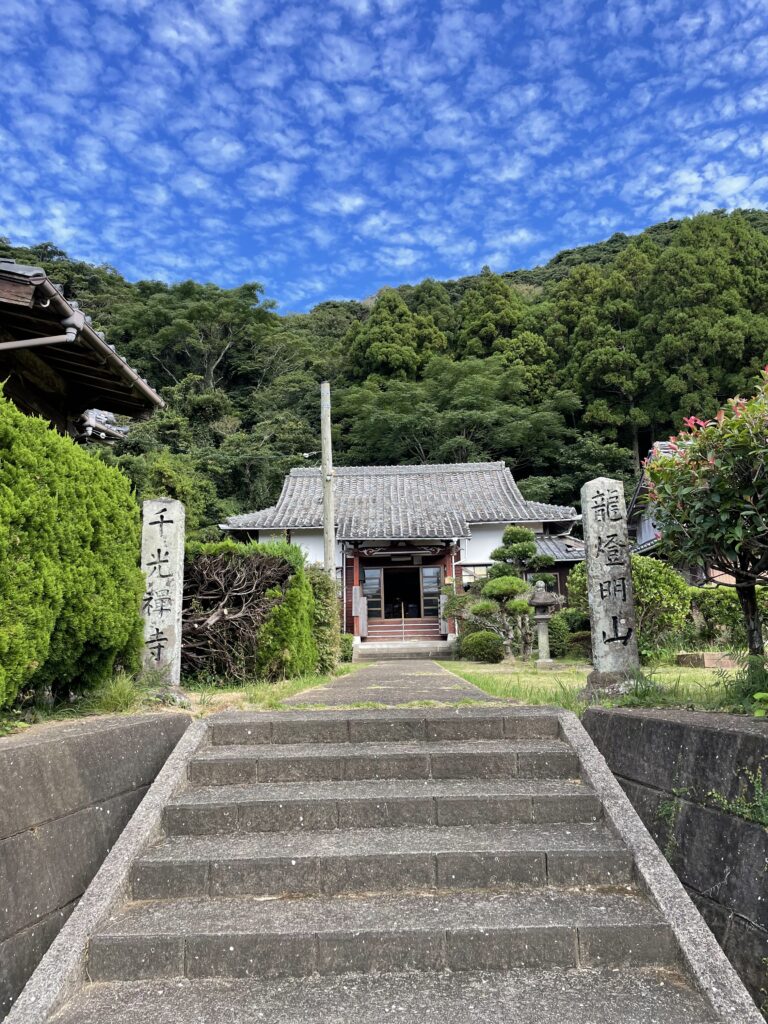
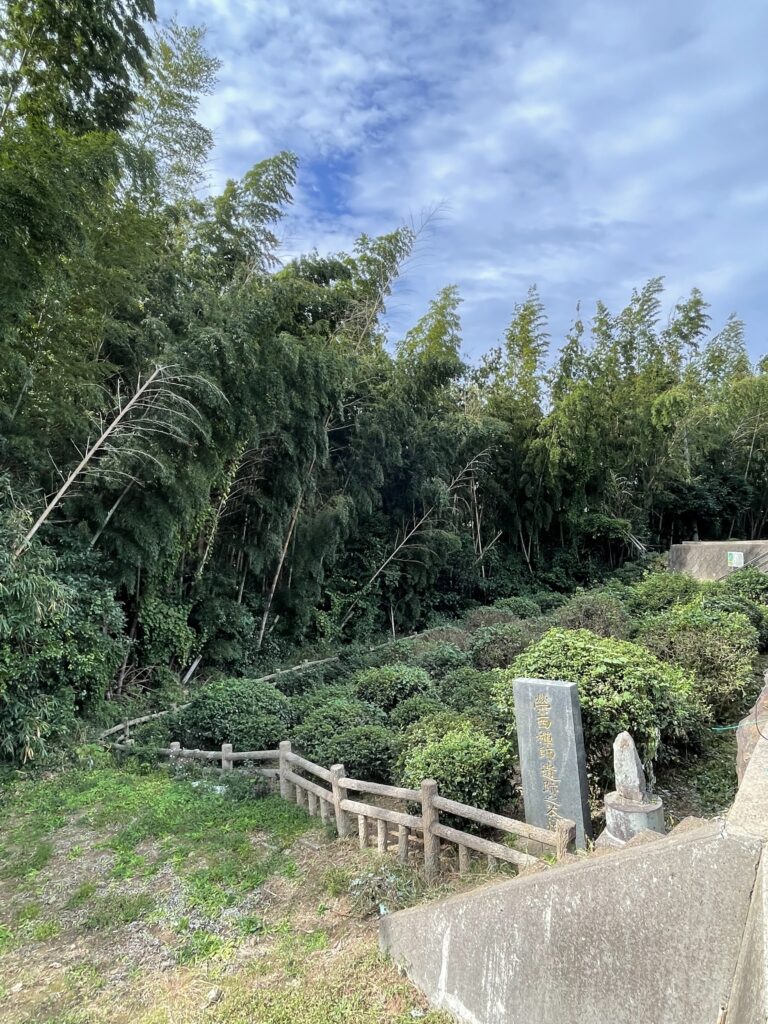
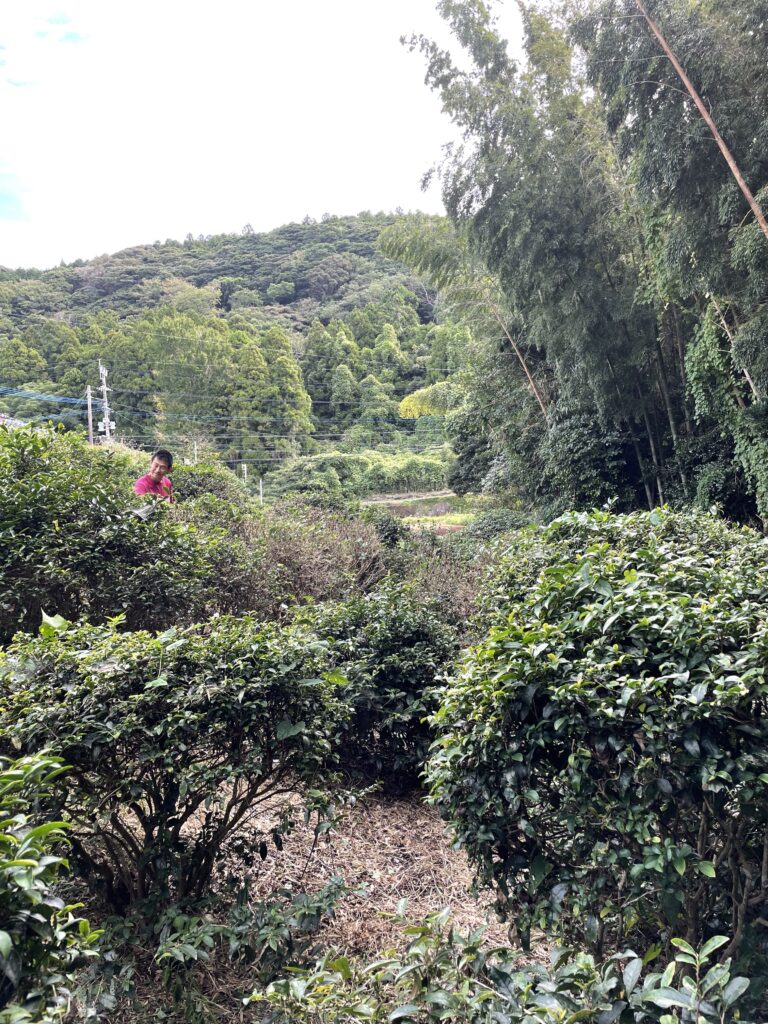
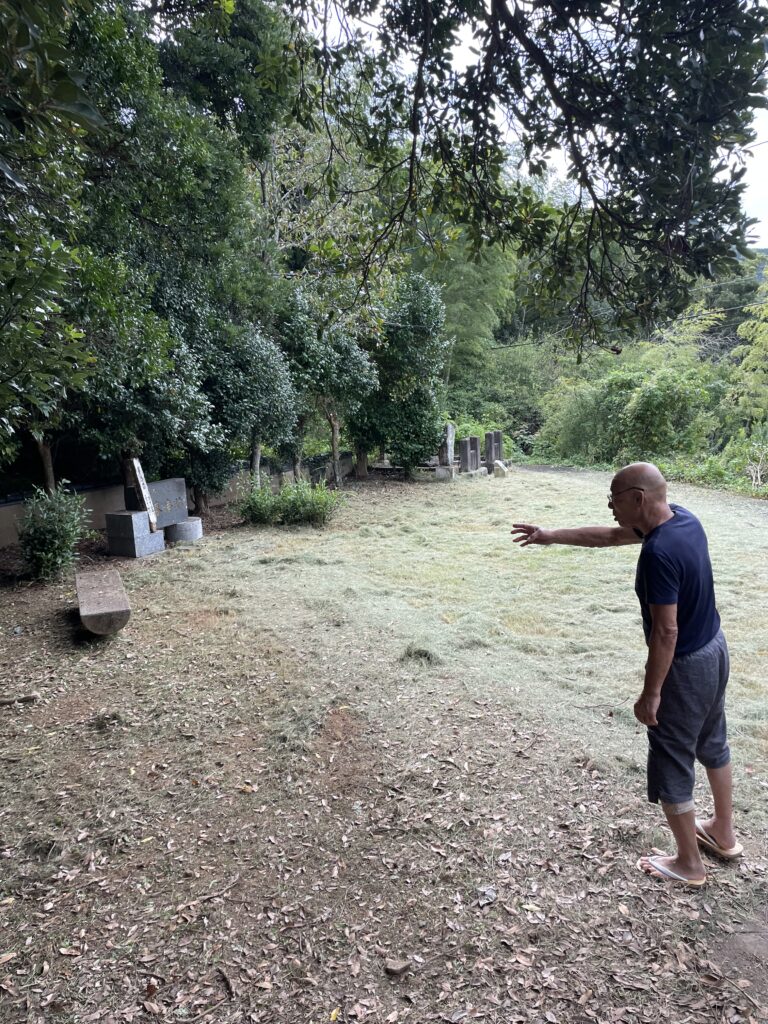
Wholly in line with Zen practice, as soon as we arrived we were each given a broom and were asked by the head monk of Senkoji (the current name of the more modern Buddhist temple) to sweep the mowed grass off the foundation of the original building. What an honour!

Early October brought us a colourful display of the bright and dainty Cosmos flowers.

Tea seed hunting!
On the edges of the rows of tea trees we can now often find a few tea seeds. We’ve collected a bunch so we can show them to anyone visiting our tea tours in other seasons.
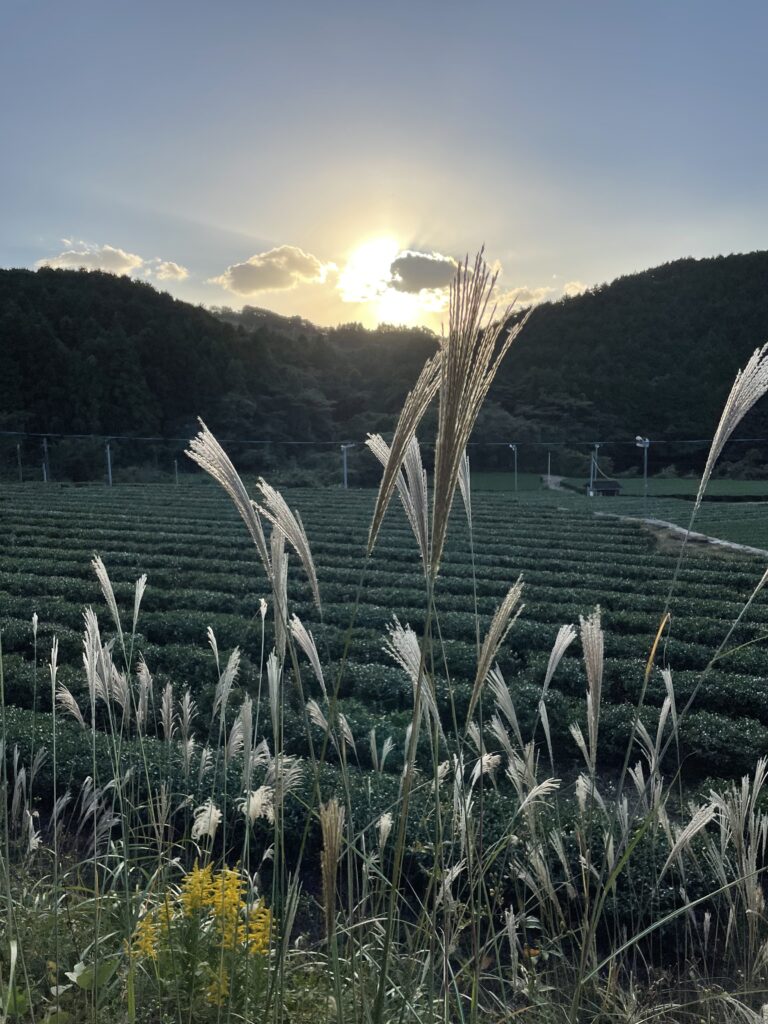
Susuki (pampas grass) is now adorning the roadside and edges of the tea (and rice) fields in abundance.
Tea Laboratory
We were lucky to be invited to visit the Nagasaki Agricultural & Forestry Technical Development Centre’s Tea Laboratory together with Haruna Nishida, owner of speciality tea shop shuka in Nagasaki city. Haruna had bought 2 competition grade teas at an auction. As competition teas are usually aracha (‘crude tea’, not fully finished in their processing) she asked the Tea Laboratory for advice in how to give her teas a final hiire (light firing).
It was fascinating to see a glimpse of the Tea Laboratory, from seeing how they brew and evaluate teas, and also seeing some unusual production machines: from a miniature tea processing line-up to some antique processing machines in their factory.
Surrounding the lab and the factory there are a lot of small plots of tea, or single rows to cultivars: all neatly labeled with cultivar names. Though the Tea Laboratory here in Nagasaki does not develop any new cultivars, they plant a lot of cultivars to see how they react to the local Nagasaki terroir. It’s like walking in a Japanese tea plant library!
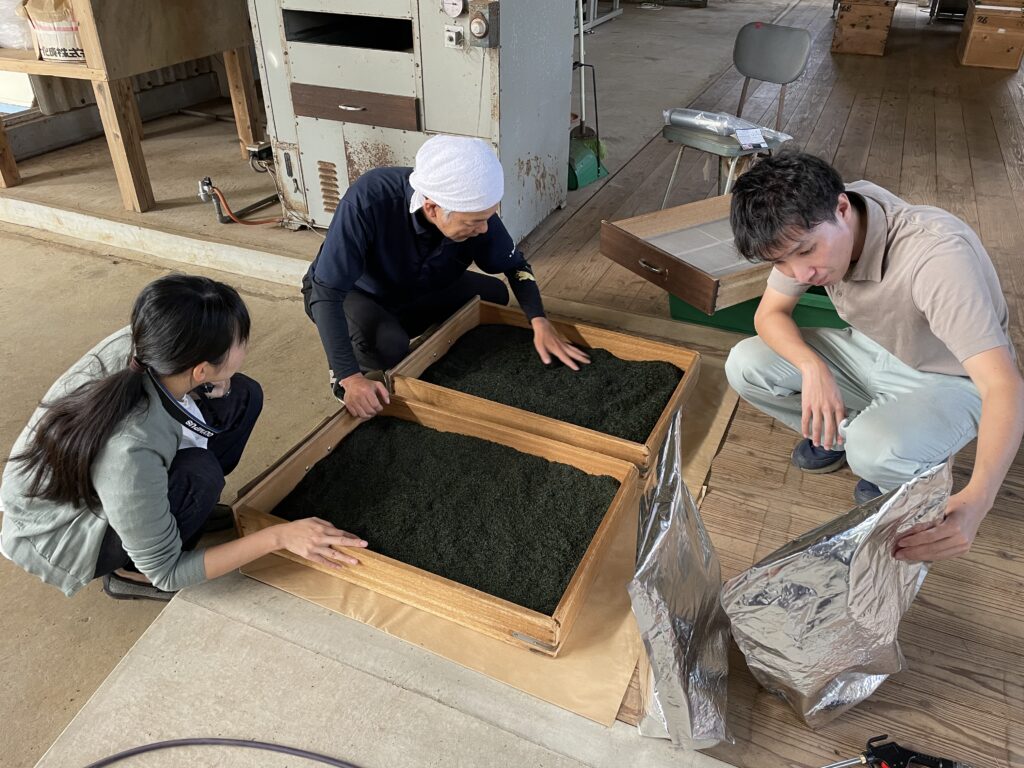
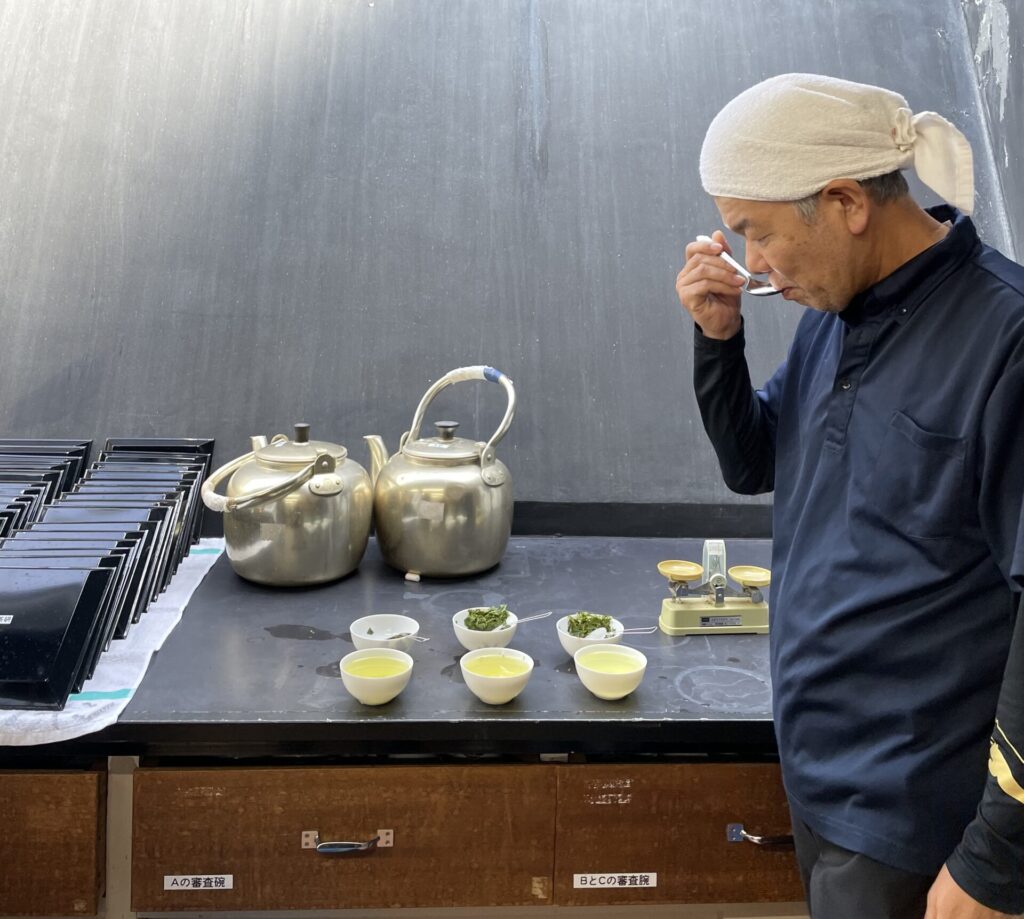
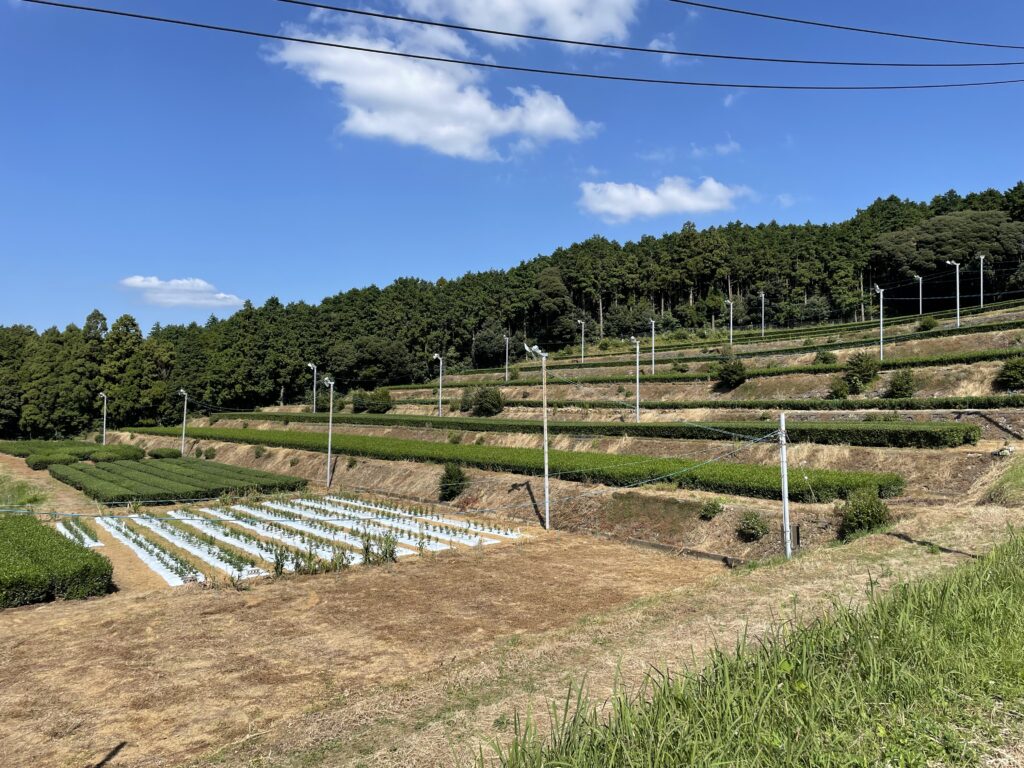

Autumn rice harvest
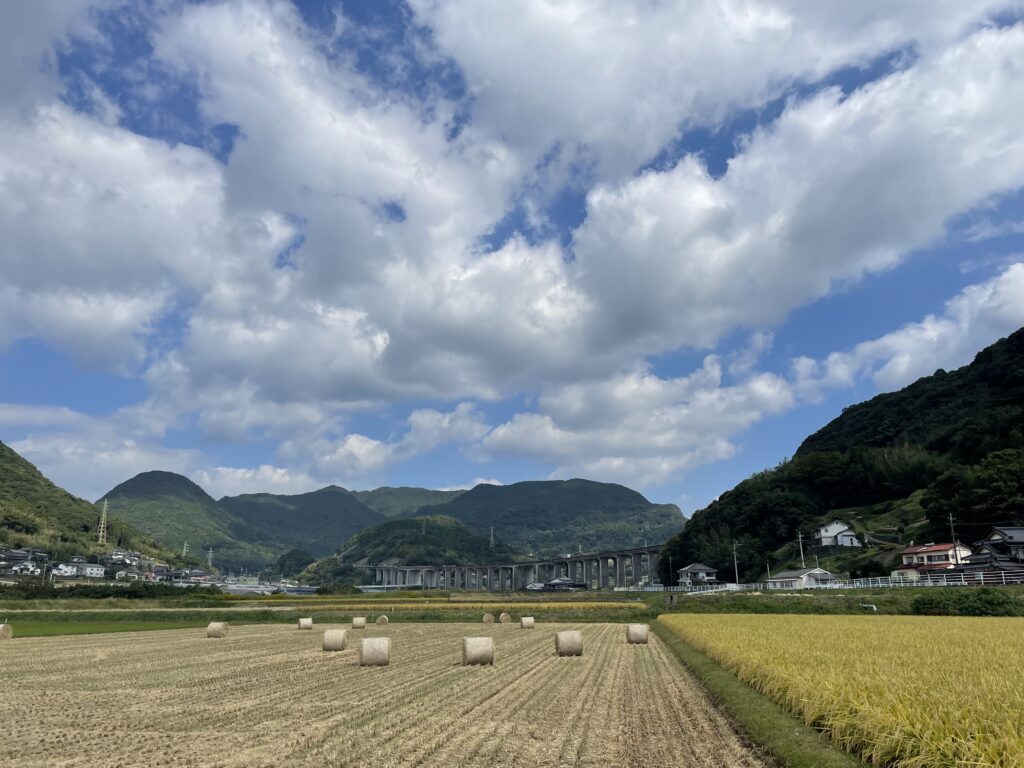
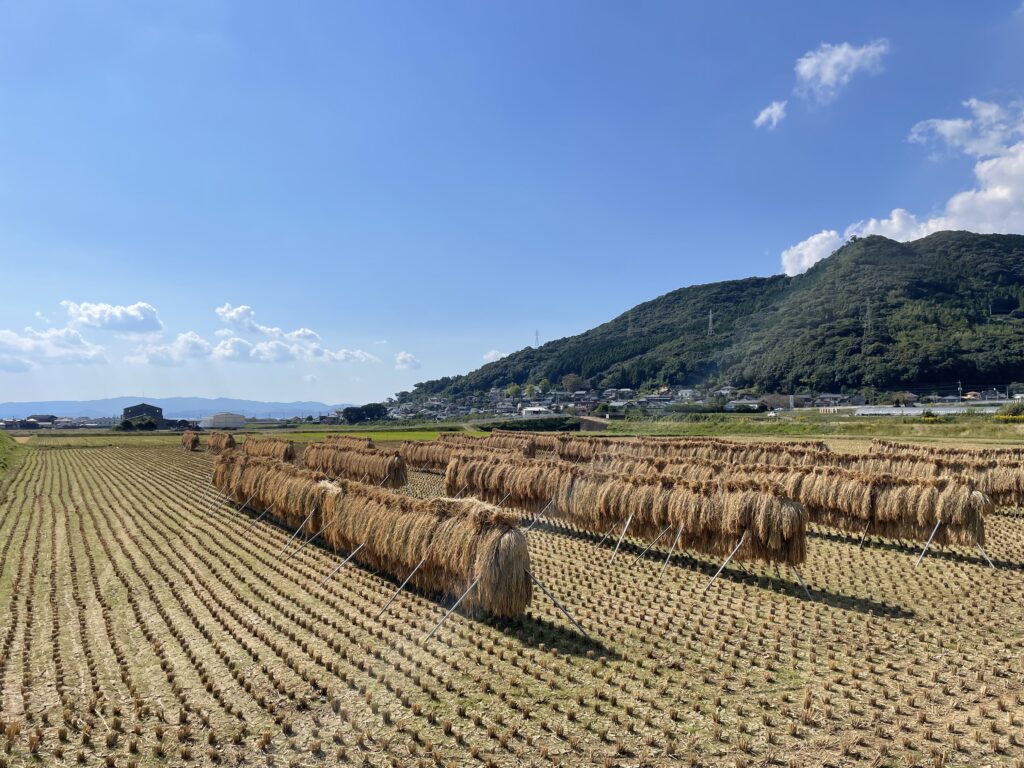
Apart from tea harvest season, in October we’ve seen the rice fields transform from a lush golden green to sudden bare fields. After harvest, many rice farmers hang the rice for two weeks to decrease the moisture in the rice grains. A lot of local people (from tea farmer to tourist association officer) have a field or two of rice that they plant and harvest for their own consumption. Those that don’t have their own fields all flock to the shops to buy the fresh new harvest – geeking out over rice cultivars and the percentage of polishing they prefer for their rice!